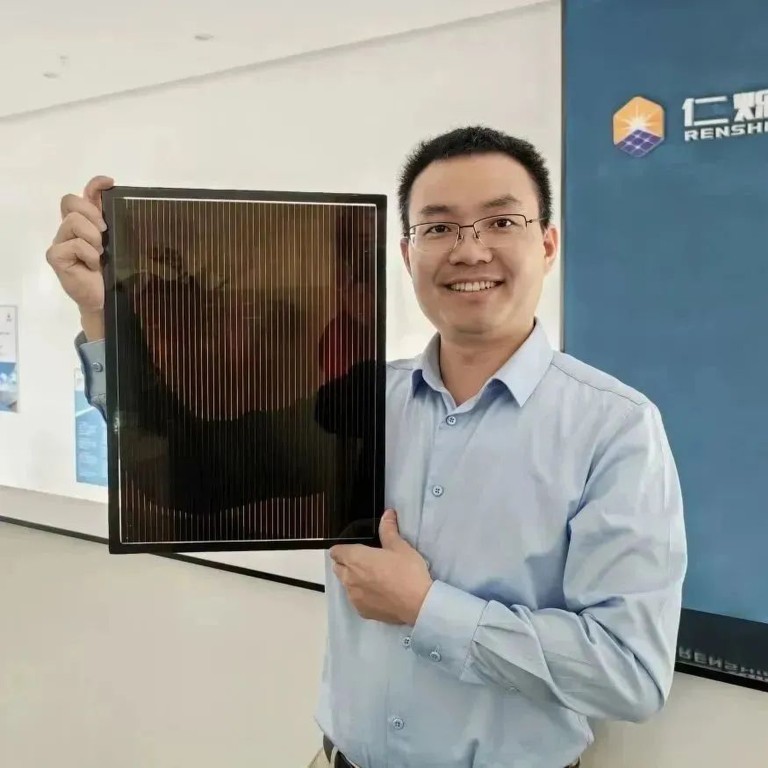
Chinese scientists boost perovskite solar cell efficiency
- A team of researchers have developed the most efficient version yet of the technology, which could provide a low-cost source of solar power
- A reviewer for the journal Nature says the team’s ‘new approach’ achieved a ‘very meaningful result in this field’
Chinese researchers say they have developed a new form of solar cells that not only have greater efficiency but can also be mass-produced at half the cost of traditional silicon cells.
Scientists around the world have been working on this technology for more than a decade and in just a few years, the power-conversion efficiency (PCE) of perovskite cells has soared from 3.8 to over 25 per cent.
In the latest advance a team from Nanjing University, led by Professor Tan Hairen, used a layered solar cell structure to achieve higher energy conversion rates.
Tan’s team has been studying this technology extensively. Their small-area perovskite stacked cells achieved a conversion efficiency of 28 per cent last June, as certified by the internationally authoritative Solar Cell Efficiency Tables, surpassing traditional silicon cells for the first time.
Chinese solar panel maker plans US factory in win for Biden clean-energy push
Their latest findings, published in the peer-reviewed journal Nature last Sunday, have improved upon this, reaching an efficiency of 29 per cent.
The team has been working on solar cells with an upper layer that absorbs short-wave sunlight and a lower layer that absorbs the long waves to improve the overall use of light.
A layer in the middle connects these two, and the key to improving performance is to boost the PCE of the bottom layer and develop a high-performance layer to connect the two.
In the latest study, Tan wrote he had found a way to optimise the material for the interconnecting layer to make it suitable for low-cost processing on a large scale.
The researchers also used a vacuum conditioning solution to improve the efficiency of the perovskite film in the bottom layer by reducing defects and improving its ability to extract electrons.
A reviewer from Nature said: “This paper shows a very meaningful result in this field in that it not only shows excellent photovoltaic performance on the world-best all-perovskite tandem but also presents a new approach.”

The cells also have a sufficient lifespan. “The device retains over 90 per cent of its initial performance after 600 hours of continuous operation under simulated one-sun illumination,” Tan wrote in the paper.
In an interview with state media, Tan said: “The raw materials for making perovskite cells are cheap and abundant, making the production costs of these cells just one 20th of traditional silicon cells. Moreover, they are easier to produce and can be made in a single factory.
“Even with other items added, the overall cost of production is only half of that of traditional silicon cells.”
Solar to drive renewable energy use, as China’s capacity just keeps expanding
Beyond their academic roles, Tan and his team are also involved in commercialising their technology and have established a start-up called Renshine Solar to achieve this end.
It has designed perovskite cells for use in building roofs or walls, or fitted to electric vehicles to improve their range. Because they are designed to generate electricity under low-light conditions, they could even be used to charge phones or laptops.
This year they have signed an industrial project agreement with the Changshu government in Jiangsu province and built a production line that aims to achieve a capacity of 150 megawatts by September.

